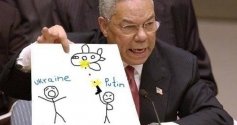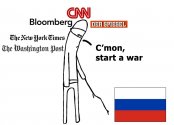You are using an out of date browser. It may not display this or other websites correctly.
You should upgrade or use an alternative browser.
You should upgrade or use an alternative browser.
Miscellaneous News
- Thread starter bd popeye
- Start date
The question remains how much value economically is going to benefit the Asia-Pacific region, specifically the ASEAN countries who's largest trading partners is CHINA. What incentives is the U.S. prepared to offer on the table not only for these countries being enticed to partake in what essentially a CHINA containment strategy other than TRUST ME BRO?How China could feel a US-led economic squeeze in the Indo-Pacific
could make it tougher for Beijing to use its economic clout in the region in the longer term, even as other more immediate crises distract the United States, diplomatic observers said.
- The White House’s new regional strategy puts the focus back on Beijing, despite other geopolitical distractions, analysts say
- The United States will try to build a strategic environment ‘that makes it tough for China’
While senior US officials have warned that a could “begin at any time”, the Asia-Pacific region remained the most important focus to the US foreign policy, they said.
In the long-awaited Indo-Pacific strategy released on Friday, US President reaffirmed the need for sustained engagement in the region, including expanding the US Coast Guard presence and stronger regional alliances, to counter what it views as China’s aggressive and coercive behaviour in the East and South China seas as well as towards .
“This intensifying American focus is due in part to the fact that the Asia-Pacific faces mounting challenges, particularly from the People’s Republic of China,” the White House said.
“[China] is combining its economic, diplomatic, military, and technological might as it pursues a sphere of influence in the Indo-Pacific and seeks to become the world’s most influential power.
“The United States will defend our interests, deter military aggression against our own country and our allies and partners – including across the Taiwan Strait – and promote regional security by developing new capabilities, concepts of operation, military activities, defence industrial initiatives, and a more resilient force posture.”
Renmin University international relations professor Shi Yinhong said the release of the strategy signalled that the US strategic focus remained in the Asia-Pacific. “US pressure on China may ease in the short term, but in the long run, it is China, rather than Russia, that is considered as the most serious competitor to the US,” Shi said.
Aaron Rabena, a research fellow at the Asia-Pacific Pathways to Progress Foundation in Metro Manila, agreed, saying conflicts in Iraq and Afghanistan had sapped US “resources and bandwidth”. “After decades of being drained in the Middle East, the US realised that they have neglected Asia – to China’s benefit,” Rabena said.
“The US should see to it that despite tensions or conflict in Ukraine, the Asia-Pacific strategy stands and that American resources will remain focused on the Asia-Pacific.” Since taking the office a year ago, Biden has stepped up efforts to reinforce US alliances in the region, including the .
The administration has also forged a three-way military partnership with Australia and Britain – , which Beijing said would “seriously undermine regional peace and intensify the arms race in the region”.
Now the focus also appears to be on addressing China’s economic clout, which grew in the last decade as the US’ commitment to region came into question, particularly with former US president Donald Trump’s decision in 2017 to , a trade pact that the US had helped craft as a counterweight to China.
The new strategy includes an Indo-Pacific economic framework to cover everything from digital trade, labour and environmental standards, to trade facilitation and supply chain resilience.
In the document released on Friday, the US said its objective “is not to change China but to shape the strategic environment in which it operates, building a balance of influence in the world that is maximally favourable to the United States, our allies and partners, and the interests and values we share”.
Shi said the new economic framework was likely to exclude China, and the US might seek to build a “strategic environment” that would prove to be difficult to China particularly in the economic sphere.
“The US has said it won’t seek to change China, which means it won’t seek to change China’s political system but build a strategic environment that benefits its allies and partners,” he said. “It will try to make it difficult for China.”
Source:
Non paywall:
I would say that it's time to increase our military spending to 2% of GDP this year. The US is going all out to damage our society and people on all fronts.
The U.S. is not part of or to any trade agreements with these countries it's not a part of the recently signed and started R.C.E.P. not a member of CPTPP not anything.
This report is nothing BUT HYPE IN TRYING to persuade and soothe the concerns of their domestic audiences that they're doing something tangible and tough against China. And all this laughable so called strategic report is nothing more than just a propaganda b.s. amplified by the western media.
China shouldn't be alarmed by this move or recent pronouncements because what matters are not what's being said but what's being done on the ground and the corresponding NUMBERS that supports that CHINA'S importance ECONOMICALLY can't be just wished away by any American President's wishful aspirations.
I thought the feeble and failed attempt by then TRUMP administrations so called TRADE WAR would have taught the Americans important and valuable lessons but it seems that Americans can't see beyond the hammer as it's policy proposals against a determined and inevitable China.
China should highligh the U.S. genocide in Afghanistan to the mainstream and with a specail emphasis on the developing third world countries the West is trying to reestablish a bigger presence in.Afghanistan is a very poor country, America has played a big part to impoverish it. now they rob it in industrial scale. if Taliban is still Taliban, they should launch a few more 911 to retaliate.
I just don't get it anymore. Their strategems are too advanced for simple minds like mineI don't see anything wrong with this. He/she/them/it is a perfect representation of America.
The Ukrainian crisis has nothing to do with Ukraine. It’s about Germany and, in particular, a pipeline that connects Germany to Russia called Nord Stream 2. Washington sees the pipeline as a threat to its primacy in Europe and has tried to sabotage the project at every turn. Even so, Nord Stream has pushed ahead and is now fully-operational and ready-to-go. Once German regulators provide the final certification, the gas deliveries will begin. German homeowners and businesses will have a reliable source of clean and inexpensive energy while Russia will see a significant boost to their gas revenues. It’s a win-win situation for both parties.
In a world where Germany and Russia are friends and trading partners, there is no need for US military bases, no need for expensive US-made weapons and missile systems, and no need for NATO. There’s also no need to transact energy deals in US Dollars or to stockpile US Treasuries to balance accounts. Transactions between business partners can be conducted in their own currencies which is bound to precipitate a sharp decline in the value of the dollar and a dramatic shift in economic power. This is why the Biden administration opposes Nord Stream. It’s not just a pipeline, it’s a window into the future; a future in which Europe and Asia are drawn closer together into a massive free trade zone that increases their mutual power and prosperity while leaving the US on the outside looking in. Warmer relations between Germany and Russia signal an end to the “unipolar” world order the US has overseen for the last 75 years. A German-Russo alliance threatens to hasten the decline of the Superpower that is presently inching closer to the abyss. This is why Washington is determined to do everything it can to sabotage Nord Stream and keep Germany within its orbit. It’s a matter of survival.
NOTE: Payments for Russian natural gas that transits Ukraine to Europe are settled in USD.
Payments for Russian natural gas that transits the Baltic Sea to Germany via the first Nord Stream pipeline are settled in Euros, as will payments for gas from Nord Stream II.
In a world where Germany and Russia are friends and trading partners, there is no need for US military bases, no need for expensive US-made weapons and missile systems, and no need for NATO. There’s also no need to transact energy deals in US Dollars or to stockpile US Treasuries to balance accounts. Transactions between business partners can be conducted in their own currencies which is bound to precipitate a sharp decline in the value of the dollar and a dramatic shift in economic power. This is why the Biden administration opposes Nord Stream. It’s not just a pipeline, it’s a window into the future; a future in which Europe and Asia are drawn closer together into a massive free trade zone that increases their mutual power and prosperity while leaving the US on the outside looking in. Warmer relations between Germany and Russia signal an end to the “unipolar” world order the US has overseen for the last 75 years. A German-Russo alliance threatens to hasten the decline of the Superpower that is presently inching closer to the abyss. This is why Washington is determined to do everything it can to sabotage Nord Stream and keep Germany within its orbit. It’s a matter of survival.
NOTE: Payments for Russian natural gas that transits Ukraine to Europe are settled in USD.
Payments for Russian natural gas that transits the Baltic Sea to Germany via the first Nord Stream pipeline are settled in Euros, as will payments for gas from Nord Stream II.


